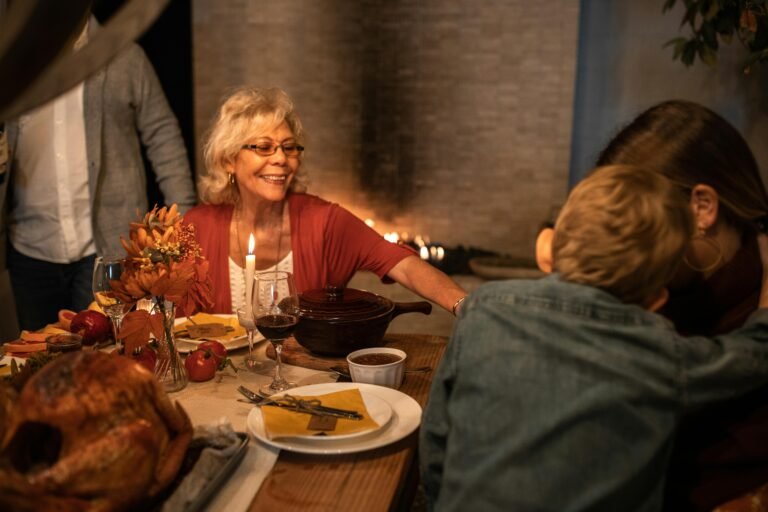Thanksgiving is one of those rare times of the year when families, friends, and even communities pause to reflect on gratitude. The term “Thanksgiving blessings” goes beyond the food on the table. It is about recognizing the value of togetherness, love, kindness, and appreciation. While most people associate blessings with prayers before meals, the concept stretches into daily life, conversations, relationships, and even personal growth.
In this article, I’ll walk you through everything you need to know about Thanksgiving blessings: what they mean, how they can be practiced, and why they matter. I’ll also include personal reflections, practical tips, and real-life examples to help you make your Thanksgiving more meaningful.
What Does “Thanksgiving Blessings” Really Mean?
At its core, Thanksgiving blessings are words, thoughts, or actions that express gratitude. It can be a prayer spoken before a meal, a heartfelt message shared with loved ones, or even a simple act of kindness extended to a stranger.
Blessings are not limited to religious contexts. Even in non-religious households, people express thanks for life’s gifts—big or small. For some, it’s about thanking God. For others, it’s simply about appreciating family, health, or opportunities.
Personally, I’ve found that the most powerful blessings come not from rehearsed lines but from honest words spoken directly from the heart.
The History of Thanksgiving Blessings
The tradition of giving thanks dates back centuries. Native Americans had rituals of gratitude long before Thanksgiving became a holiday. When the Pilgrims celebrated the first Thanksgiving in 1621, it was not just about food—it was about survival, cooperation, and divine providence.
Over time, blessings became a central part of the holiday. Families would gather to pray, share stories of gratitude, and reflect on the year. Even today, many people pass this tradition down through generations.
Ways to Share Thanksgiving Blessings
1. Traditional Prayers
For religious families, prayers are a common way to start a Thanksgiving meal. These prayers often thank God for food, health, and family.
2. Personal Gratitude Sharing
Instead of a formal blessing, some families go around the table and ask each person to share one thing they are thankful for. I’ve done this at my own Thanksgiving dinners, and it always sparks laughter, tears, and connection.
3. Written Blessings
Handwritten notes, greeting cards, or even a short letter can carry blessings that last long after the holiday is over.
4. Acts of Kindness
Blessings are not always words. Volunteering at a soup kitchen, donating food, or simply calling someone who feels lonely can be one of the most powerful blessings you can give.
Why Thanksgiving Blessings Are Important
Blessings remind us of the bigger picture. In a fast-paced world, we often take things for granted. Thanksgiving pushes us to pause and reflect.
For example, a couple of years ago, I had a difficult season with work stress and personal challenges. But on Thanksgiving, when I sat down with family, I realized I still had health, supportive friends, and the ability to keep going. That small moment of reflection turned my perspective around.
Research even shows that gratitude practices improve mental health, reduce stress, and strengthen relationships. So blessings are not just symbolic—they’re transformative.
Creative Ideas for Thanksgiving Blessings
- Blessing Jar: Have each family member write down blessings throughout November. Read them aloud on Thanksgiving Day.
- Photo Blessings: Share old family pictures and talk about the memories behind them.
- Digital Blessings: If you can’t meet in person, send a video message or a digital card with blessings.
- Nature Walk: Take a family walk and express gratitude for the beauty around you.
Incorporating Thanksgiving Blessings Beyond the Holiday
The spirit of gratitude should not end with one holiday. Try making blessings part of your everyday life.
- Start a gratitude journal.
- Send a “thank you” text weekly to someone who has impacted you.
- Practice mindfulness by acknowledging small daily blessings like sunshine, laughter, or a warm meal.
I started keeping a gratitude journal five years ago, and it has changed how I view challenges. Even on tough days, I can look back and see a list of small but meaningful blessings.
Conclusion
Thanksgiving blessings are more than just words spoken at the dinner table. They are reminders of gratitude, togetherness, and love. By practicing blessings—whether through prayers, kind words, or actions—we enrich our lives and the lives of others.
As you celebrate Thanksgiving, remember that blessings are not about perfection. They are about presence, gratitude, and sharing love. Whether you’re with family, friends, or even alone, taking a moment to reflect on blessings can make the holiday deeply meaningful.
FAQs
1. Do I have to be religious to give Thanksgiving blessings?
No, blessings can be spiritual, personal, or even non-religious. Gratitude is universal.
2. What’s the simplest Thanksgiving blessing I can say?
A simple “Thank you for this food and for the people I love” works beautifully.
3. How do I include kids in Thanksgiving blessings?
Ask them to share one thing they are thankful for—kids often give the most heartfelt answers.
4. Can I give blessings to people outside my family?
Absolutely. Friends, neighbors, coworkers, and even strangers can be touched by your words or actions.
5. How do I make blessings a year-round habit?
Keep a gratitude journal, practice mindful reflection, and regularly thank people in your life.
Title
Thanksgiving Blessings: Meaning, Ideas, and How to Share Gratitude
Description
Discover the meaning of Thanksgiving blessings, their history, and creative ways to share gratitude. Explore prayers, personal stories, and practical tips to make your Thanksgiving more meaningful.

